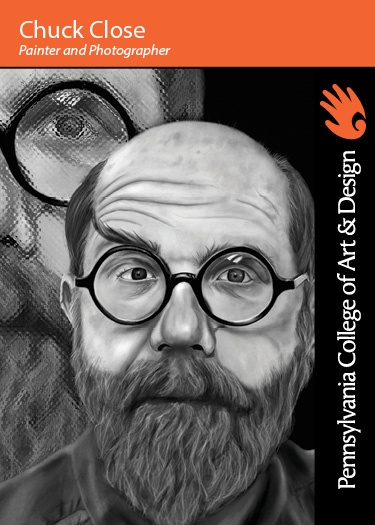
Artist Spotlight: Chuck Close
Monday, May 11th, 2015
Chuck Close is widely known for his photorealistic paintings. He plays with ideas of color and form to create individual color squares. Although the squares appear abstract up close, they form exceedingly realistic images at a distance.
Close’s artwork appears as if viewed through a thick layer of glass, and in a way his subjects almost seem to dissolve. Big Self-Portrait, painted in black and white, was Close’s first mural-sized work, painted from photographs of himself. This process took him over four months to complete.
Unfortunately, Close experienced a tragedy in 1988 that had great influence on his style of painting. He was diagnosed with a spinal blood clot that left him with only slight movement in his arms and able to walk for only a few steps. However, as any great artist would do, he did not let this stand in the way of the pursuit of his passion. Close has continued to paint with a brush strapped onto his wrist with tape.
Born: 1940, Monroe, WA
Famous work: Big Self Portrait, 1967-1968
Facts about Chuck Close:
- Suffers from severe dyslexia.
- Graduated from the University of Washington in 1962, and immediately went to Yale where he earned a Master of Fine Arts from the university’s Graduate School of Art and Architecture.
- Jackson Pollock was a major influence in his early life. He switched his focus from abstract to photo-realism. He called his process “knitting”: taking Polaroids of models, then painting them on very large canvases.
- His application of color helped pave the way for the inkjet printer.
- In 1969, composer Philip Glass had a portrait done by Close, and became one of his most recognized works.
Quote: “Inspiration is for amateurs; the rest of us just show up and get to work. If you wait around for the clouds to part and a bolt of lightning to strike you in the brain, you are not going to make an awful lot of work. All the best ideas come out of the process; they come out of the work itself.”
Chuck Close illustration by Taylor Miklos ’14
